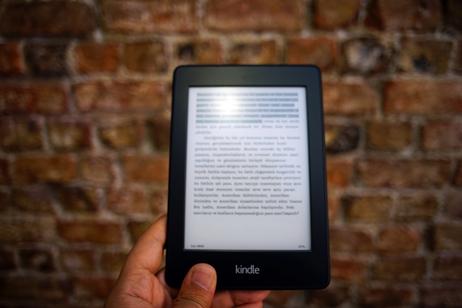With technology becoming a major component in all aspects of life today, it should be no surprise that this trend is hitting the public school sector as well. One way that technology is changing the face of education is through how information is distributed – through electronic means, rather than the traditional textbook. While more students are turning to the screen rather than turning pages, the verdict is still out on whether digital textbooks have what it takes to replace traditional books for good.
Defining the Digital Textbook
Students are tossing traditional textbooks with paper pages in favor of looking up their information on the computer, Kindle or iPad. These devices offer the ability to rent digital versions of the same textbooks, which are accessible through any online device. In some cases, digital textbooks can be accessed for free, if they are part of the public domain in cyberspace. Teachers, as a general rule, do not mind if students use the electronic or the traditional model of the textbook, as long as it delivers the same information and students remain focused on the task at hand, rather than surfing the Internet during class time.
“Kids are wired differently these days,” Sheryl R. Abshire, chief technology officer for the Calcasieu Parish School System in Lake Charles, Louisiana, told the New York Times. “They’re digitally nimble. They multitask, transpose and extrapolate. And they think of knowledge as infinite.”
According to a report at Edudemic, sales of digital textbooks went up 400 percent between 2008 and 2009. In 2010, 42 percent of students reported that they have either bought or seen a digital textbook. The projection of digital textbook sales is expected to rise at least through 2014, while sales of traditional textbooks are expected to continue to fall. One reason is that digital textbooks are about 53 percent cheaper than new traditional textbooks. However, there are many other reasons students are transitioning to digital textbooks as well.
Benefits of Going Digital
Textbook Town cites one of the most obvious benefits of transitioning to digital textbooks – less bulk in the backpack. Instead of filling the pack with five or six heavy paper books, students can now slide a compact iPad or Kindle in their bags. Students no longer have to worry about leaving a stray book at home that they might need for class that day. These devices weigh less and carry a whole lot more information and resources than traditional books, making them the convenient choice for students.
“If I’m traveling, I can just take my iPad and have all my coursework on there,” Bryce Leinan, a graduate student at American Military University, told Schools.com. “It’s easier to read graphs, since I can enlarge them. I can cross-reference notes quicker…I prefer it hands-down.”
Some teachers also appreciate the versatility of iPads in the classroom, since they offer much more than access to digital textbooks. Scott Cohen, a professor at Stonehill College, uses the iPads for his class instruction because he can incorporate many different resources into a single lesson, with a simple touch of the screen.
“The iPad really helps move between different kinds of texts and material, visual, cinematic, written, audio, etcetera,” Cohen told Mind Shift. “Students love them, beyond just being a shiny new device.”
College campuses are not the only places where digital textbooks are being embraced. Public schools are also grabbing hold of the technology craze, with many high schools going digital for many of their course offerings. Some of the additional benefits students have enjoyed with digital textbooks include:
- Cost – Although e-readers may come with a fairly large price tag, the savings between digital and traditional textbooks adds up quickly.
- Faster Searches – Instead of thumbing through pages of text, students can find the passages they are looking for with fast keyword searches.
- Supplemental Information – Students have the ability to add to their knowledge warehouse by simply performing online searches for additional information as they are reading.
- Environmental Friendliness – Digital textbooks save trees and never end up in landfills like traditional textbooks.
Drawbacks of the Digital Trend
While there are many potential benefits to be gained from online textbooks, both for the students and the teachers, there are some significant drawbacks as well. Some of the disadvantages include:
- Highlighting – Students who like to follow along during class and highlight relevant portions of text may find this significantly more challenging with a digital textbook.
- Eye Strain – Staring at an electronic screen can result in more eyestrain than staring at the pages of a book for some students.
- Battery Power – Electronic devices like iPads and computers must be charged regularly to continue running throughout class time.
- Disparity – Not every student can afford a digital device, so education disparities between the wealthy and the poor may be further magnified if digital textbooks become the primary resource used in classrooms.
“A large portion of our kids don’t have computers at home, and it would be way too costly to print out digital textbooks,” Tim Ward, assistant superintendent for instruction at California’s Chaffey Joint Union High School District told the New York Times.
With pros and cons on both ends of the spectrum, no one is quite sure what the future of digital textbooks will look like exactly. However, most agree that they will be a part of the future in public education in America – whether it is through blended learning or classrooms that go 100% digital.
“In five years, I think the majority of students will be using digital textbooks,” William M. Habermehl, superintendent of Orange County Schools in California, told the New York Times. “They can be better than traditional textbooks.”
Questions? Contact us on Facebook @publicschoolreview.











